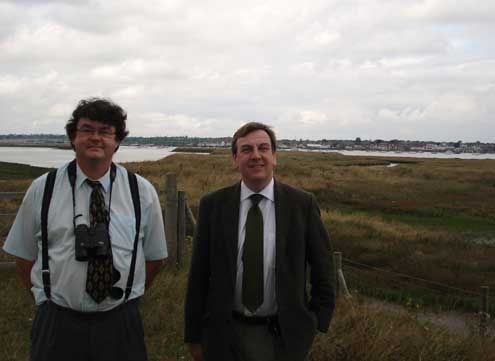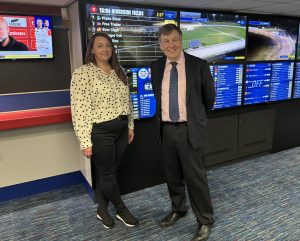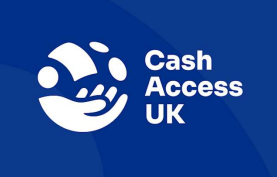 On 07 August, John Whittingdale visited Wallasea Island to see the site of the RSPB’s Wild Coast Project.
On 07 August, John Whittingdale visited Wallasea Island to see the site of the RSPB’s Wild Coast Project.
The Island, which is across the Crouch from Burnham has been chosen for this landmark conservation and engineering project which is on a scale never attempted before in the UK and is the largest of its type in Europe. Under the scheme, inert material produced from work on the CrossRail project in London will be shipped to Wallasea and used to raise land which is currently protected by sea walls. The walls will then be breached allowing the water in to transform 620 hectares of arable land into the coastal marshland it once was. This will become a wetland mosaic of mudflats and saltmarsh, shallow lagoons and pastures. The project will take ten years to complete but in time it is estimated that it will support 40,000 to 50,000 birds – almost twice the number which is currently supported by the estuary.
 John Whittingdale was anxious to confirm that the disturbance to local residents is minimized while the work goes on. He said: “The unloading of aggregate will take place some way downstream from Burnham and noise and dust suppression with down lighting will be used. There are strict planning conditions on noise and I hope that this will ensure minimal disturbance for people living in Burnham. A Sailing and Shipping Management Plan should also ensure that there is no interference with sailing activities. Once completed the Project should become a tremendous asset to the community providing a beautiful natural environment for local visitors and tourists to the area.”
John Whittingdale was anxious to confirm that the disturbance to local residents is minimized while the work goes on. He said: “The unloading of aggregate will take place some way downstream from Burnham and noise and dust suppression with down lighting will be used. There are strict planning conditions on noise and I hope that this will ensure minimal disturbance for people living in Burnham. A Sailing and Shipping Management Plan should also ensure that there is no interference with sailing activities. Once completed the Project should become a tremendous asset to the community providing a beautiful natural environment for local visitors and tourists to the area.”
John is pictured with Chris Tyas, the RSPB Project Manager, with Burnham across the river behind.


